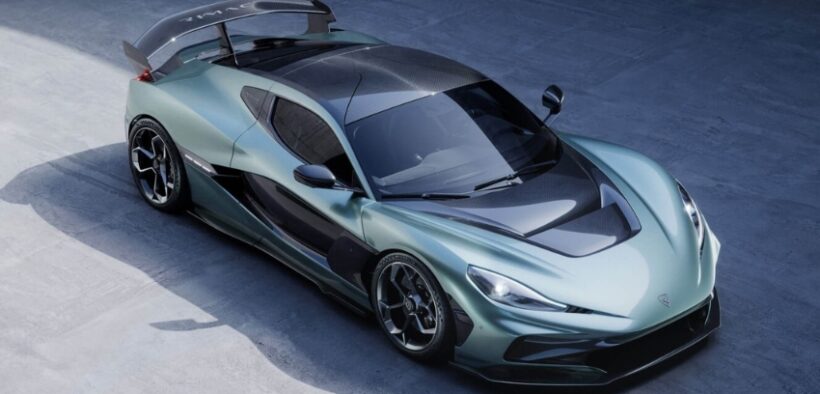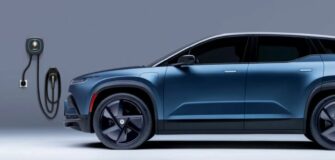Rimac Nevera R Breaks 24 Speed and Braking Records

Image Credit: Rimac Automobili
The Rimac Nevera R
If you’ve been reading about cars in 2025, you already know that the Rimac Nevera has changed the world of EV hypercars. That was already a big deal, but the new Nevera R makes it even bigger. At the Automotive Testing Papenburg track in Germany, the Rimac Nevera R shattered hopes by setting 24 official records for speed and acceleration in just one day of testing. These accomplishments are more than just numbers on a page; they mark a turning point in the history of electric racing cars.
Records Across the Board
The Nevera R didn’t just beat previous benchmarks—it obliterated them. The updated version of Rimac’s flagship hypercar achieved a 0–60 mph time of just 1.74 seconds. That’s not a typo. Even more impressive, it completed a full 0–400 km/h–0 run in only 27.89 seconds, slicing almost a full second off its own prior world record. These aren’t isolated wins either. The car now holds the world record for:
- 0–60 mph: 1.74 seconds
- 0–100 km/h: 1.86 seconds
- 0–200 km/h: 4.42 seconds
- 0–300 km/h: 9.43 seconds
- 0–400 km/h: 20.01 seconds
- 0–400–0 km/h: 27.89 seconds
These figures place the Nevera R in a league of its own, even compared to its closest combustion-engine and electric rivals. For followers of breaking auto news, this is headline material.
More Than Just Straight-Line Numbers
One of the most compelling aspects of this accomplishment is how comprehensively the Nevera R performs. It’s not just a rocket in a straight line; it brakes just as fiercely. With newly tuned dampers, a stiffer suspension, and upgraded carbon ceramic brakes, it delivers a balanced mix of savage speed and controlled stopping power. The result is a machine that can leap forward and come to a halt with equal precision.
The car’s regenerative braking system also plays a vital role, pushing recovery up to 700 kW. This technology supports not only energy efficiency but helps manage the tremendous braking forces needed for such abrupt deceleration.
Engineering Behind the Madness
The Nevera R doesn’t achieve these feats by chance. Its quad-motor layout delivers 1,914 hp and 1,740 lb-ft of torque to all four wheels, using advanced torque vectoring to keep all that power in check. According to Rimac, each change in the R version—whether it’s the updated suspension, recalibrated software, or optimized aerodynamics—was designed to enhance real-world performance, not just track records.
It’s also worth noting the car was tested using production-ready Michelin Cup 2 R tires and driven by Rimac test driver Neel Jani. This reinforces that the numbers weren’t pulled under ideal lab conditions but from an actual track scenario. In a time when the financial performance of major car brands in 2025 is under pressure, this kind of demonstrable innovation sets a strong benchmark.
 Image Credit: Rimac Automobili
Image Credit: Rimac Automobili
Rimac Nevera R’s Radical Transformation
Why It Matters
In a global market still facing EV battery production challenges and regulatory changes tied to emissions, the Nevera R is a rare reminder of how cutting-edge engineering can still lead to massive breakthroughs. As other car brands navigate supply chain issues and the semiconductor shortage, Rimac has found a way to push forward decisively.
What makes this even more impactful is that the records set by the Nevera R are now certified by third-party data loggers like Racelogic and Dewesoft. That means no marketing gimmicks—just verified performance figures backed by data. For those closely watching auto industry earnings reports and global auto market analysis, Rimac’s credibility is only climbing.
An Electric Innovation
This performance leap isn’t just a feather in Rimac’s cap; it also raises the bar for every automaker chasing the high-performance EV segment. With the Nevera R setting new records, the discussion around how new emissions regulations impact car manufacturers in the UK, US, and beyond will inevitably shift. The question is no longer “Can EVs compete?” but “How far can they go?”
You’re also seeing an evolution in how enthusiasts and the industry view electric cars. It’s not just about eco-credentials anymore. With Rimac showing what’s possible, EVs are staking a claim as the new frontier of true high-performance engineering.
Conclusion
If you needed any more proof that electric hypercars are here to stay, the Rimac Nevera R just delivered it—24 times over. With record-setting performance in both acceleration and braking, Rimac didn’t just make headlines; it made history. Whether you’re tracking the latest automotive news in 2025 or following the global supply chain’s impact on EV innovation, this is one of those rare moments when engineering, vision, and execution align perfectly. The Nevera R is not just a car; it’s a statement about where the future of automotive performance is headed.









